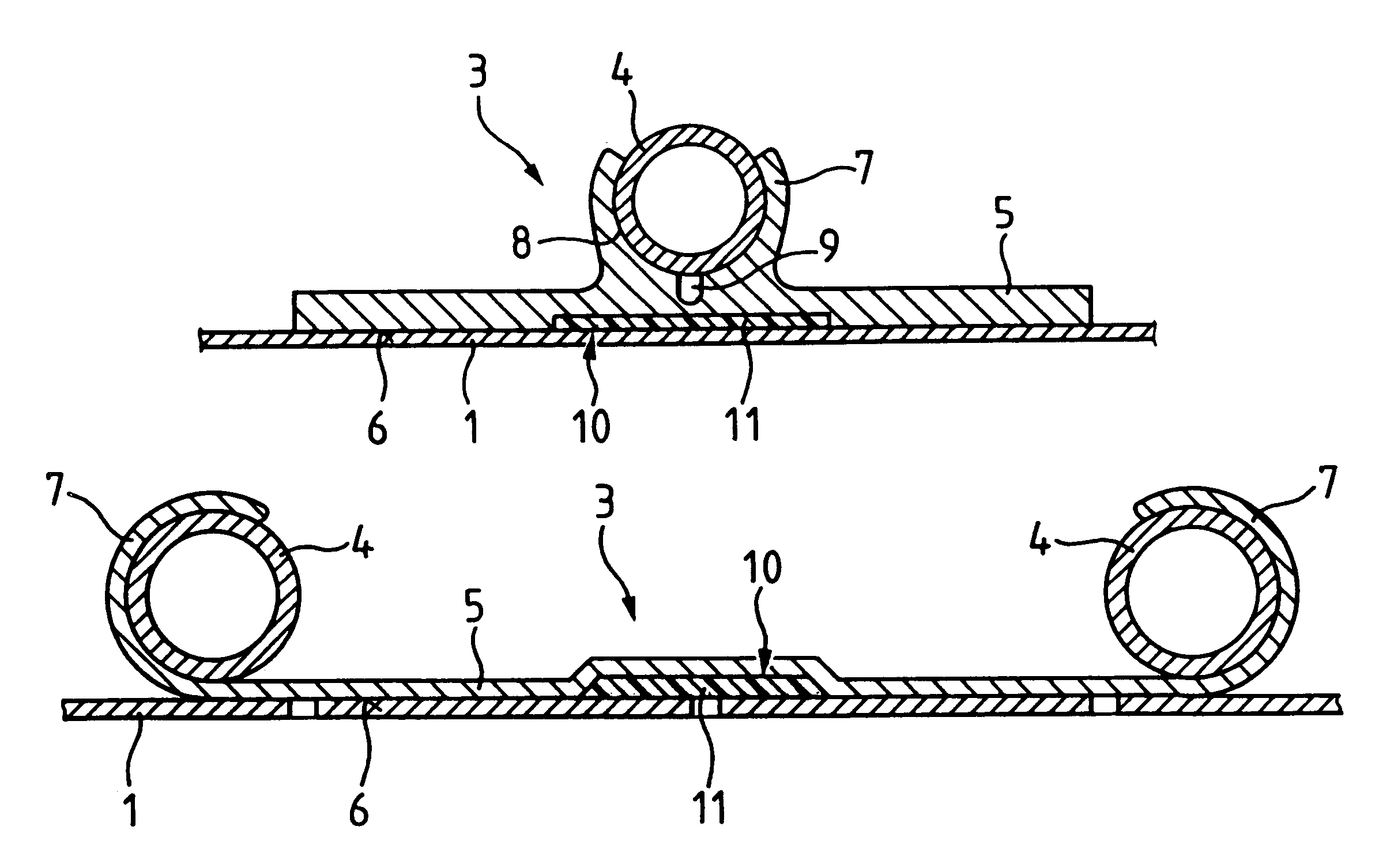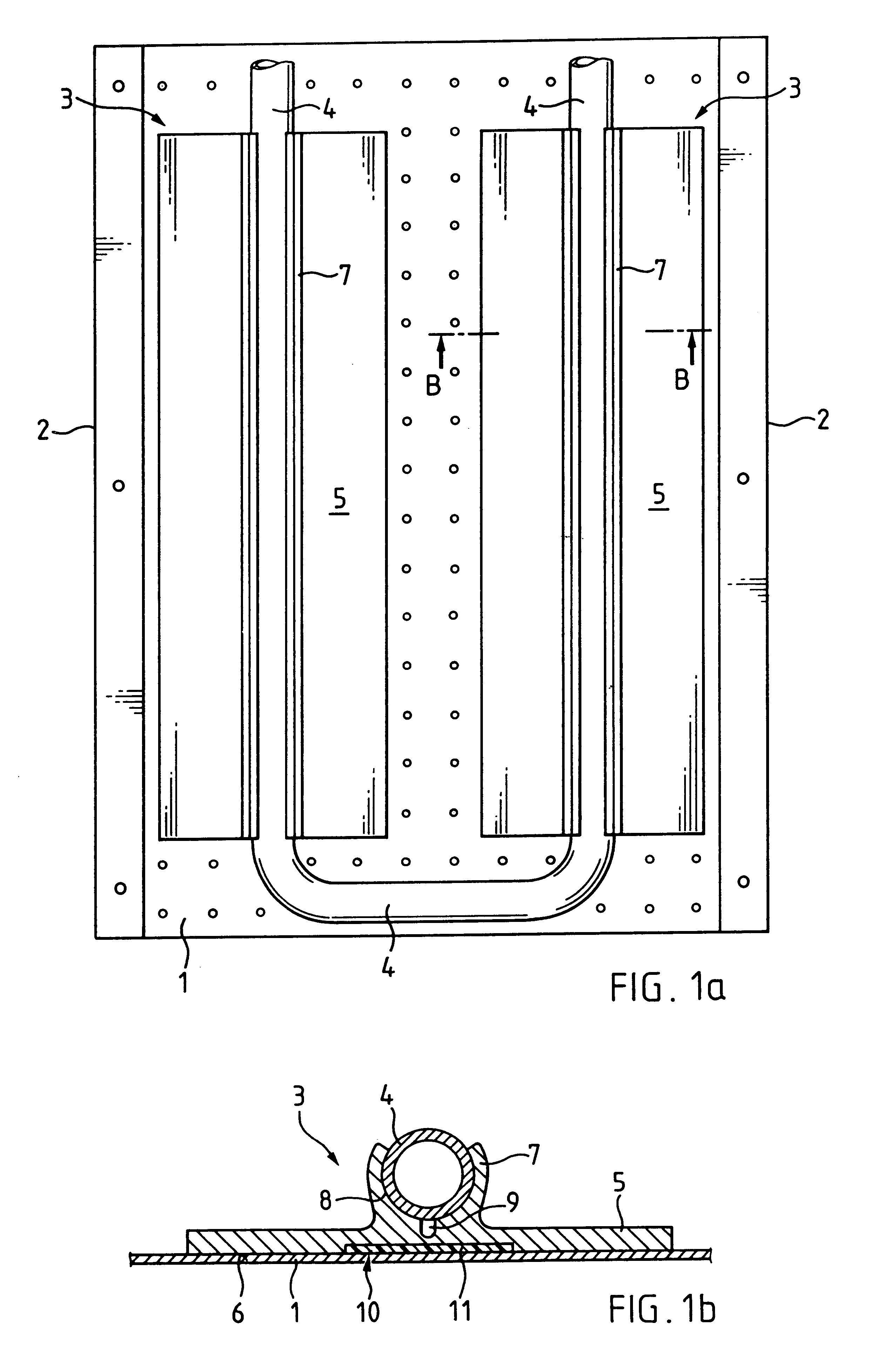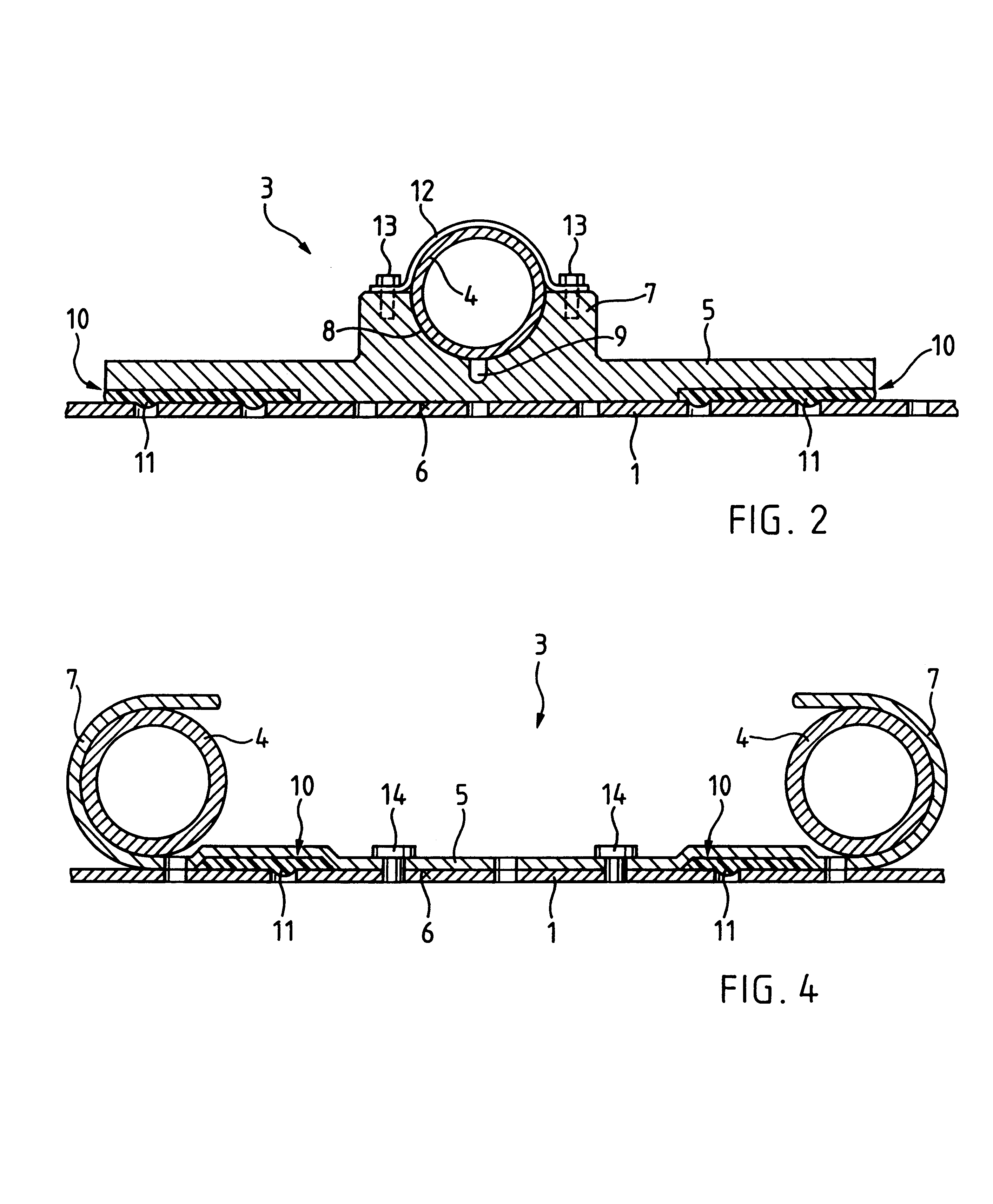Contact element and ceiling element for a heating and cooling ceiling
a technology of contact elements and ceiling elements, which is applied in the direction of domestic heating details, space heating and ventilation details, sustainable buildings, etc., can solve the problems of ceiling panels, limitations, and restricted heating and cooling of panels, and achieve improved heat transfer between the contact element and the ceiling panel, improved use effect, and increased contact surface area
- Summary
- Abstract
- Description
- Claims
- Application Information
AI Technical Summary
Benefits of technology
Problems solved by technology
Method used
Image
Examples
first embodiment
[0018]The ceiling element comprises in each case a ceiling panel 1 which is preferably, but not necessarily, perforated, and is formed of aluminium, preferably sheet aluminium, sheet steel, plastic, gypsum or wood ceiling panel 1 has side flanges 2 which serve for fastening the ceiling panel 1, for example, on the ceiling of a climatically conditioned room. In the ceiling element (FIG. 1a, b), two contact elements 3 are arranged in parallel on the upper side of the ceiling panel 1 and have a U-shaped pipe 4 of copper, steel or plastic drawn through them.
[0019]The contact element 3 is made from a strong, preferably metallic material. In the first embodiment is preferably extruded from aluminium. It has a rectangular contact panel 5 whose underside forms an essentially planar contact surface 6, while a guide 7 is arranged on the upper side. Guide 7 forms an upwardly open channel 8 into which the pipe 4 is drawn or pressed. On the base of the channel 8 is a bending groove 9 which is co...
third embodiment
[0024]In the contact element (FIGS. 3a, b), three contact elements 3 are arranged on the upper side of the ceiling panel 1 and have the pipe 4 drawn through them in a meandering fashion, two parallel pipe sections being guided in each contact element 3.
[0025]The contact element 3 is produced in each case from a strip of sheet metal, which preferably consists of an elastic copper alloy, e.g. copper / beryllium, but may also consist of aluminium, and forms a contact panel 5 which is bent over at borders 15 to form guides 7 which enclose the pipe 4 on an outer side thereof. The guide 7 is designed in each case such that it encloses the pipe 4 on the outer half of the pipe and presses elastically on pipe 4. With slight outward bending of the guides 7, the pipe 4 can be pushed into guide 7. The guides 7 may also be designed such that they extend only slightly beyond half the height of the pipe 4, with the result that the pipes can be snap-fitted into the guides 7 from above.
[0026]The conta...
fourth embodiment
[0027]In the contact element (FIG. 4), the contact element 3 is produced from sheet copper or sheet aluminium and, once again, has two guides 7 which are formed by the contact panel material being bent over at the borders 15 such that they may rest against the outer half of the pipe 4. The internal diameter of the guides 7 may be selected to be slightly smaller than the external diameter of the pipe 4, with the result that guides 7 are deformed slightly when the pipe is pushed in and thus good contact between the guide 7 and the pipe 4 is then ensured.
[0028]The contact panel 5 has two flat indents which form, in the border regions 17 of the contact surface 6, strip-like adhesive depressions 10 which are continuous in the longitudinal direction. The adhesive depressions 10 are relatively narrow, with the result that the entire adhesive surface area takes up considerably less than half of the contact surface area 6. Prior to the adhesive bonding to the ceiling panel 1, the contact pan...
PUM
 Login to View More
Login to View More Abstract
Description
Claims
Application Information
 Login to View More
Login to View More - R&D
- Intellectual Property
- Life Sciences
- Materials
- Tech Scout
- Unparalleled Data Quality
- Higher Quality Content
- 60% Fewer Hallucinations
Browse by: Latest US Patents, China's latest patents, Technical Efficacy Thesaurus, Application Domain, Technology Topic, Popular Technical Reports.
© 2025 PatSnap. All rights reserved.Legal|Privacy policy|Modern Slavery Act Transparency Statement|Sitemap|About US| Contact US: help@patsnap.com



